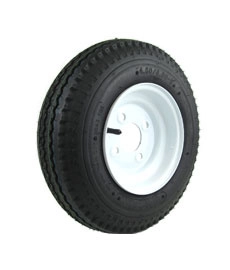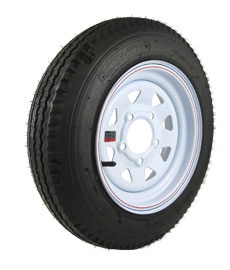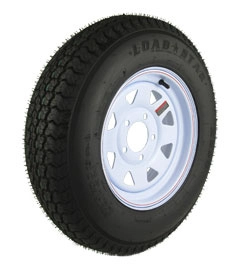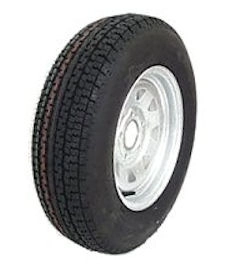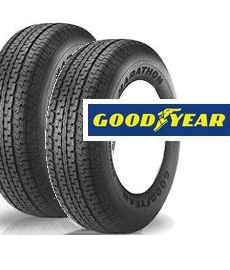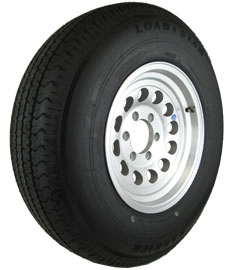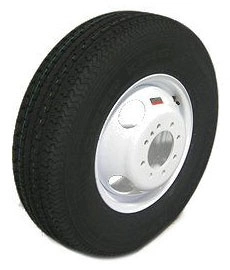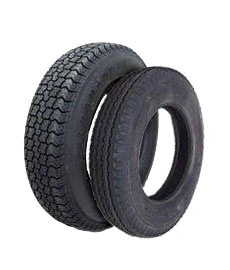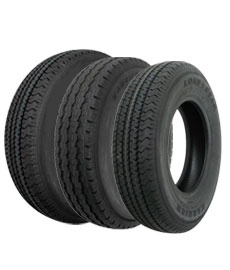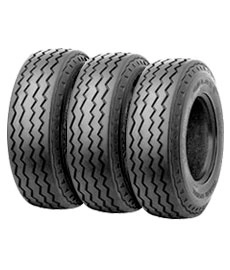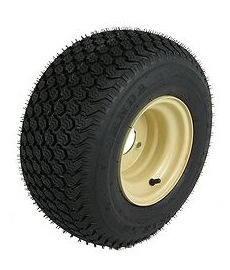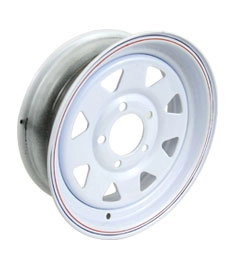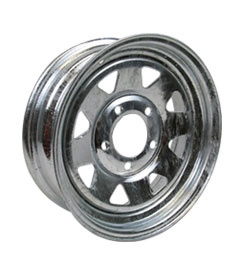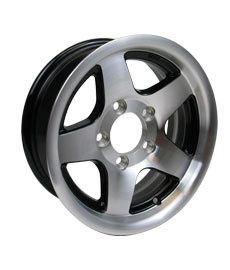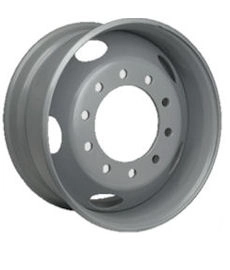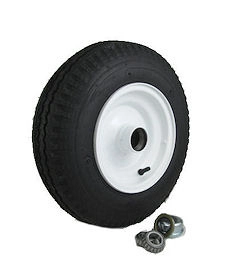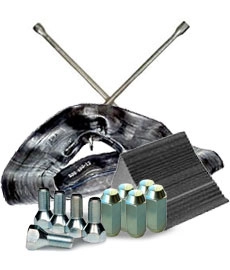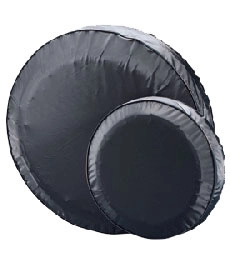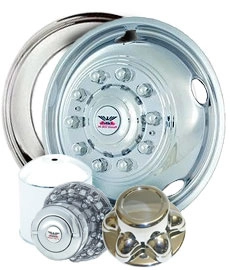TIRE SPECIFICATIONS:
Proper wheel selection is a very important component of your trailer gear system. When replacing your trailer tires and trailer rims it is critical that the proper size and load range be selected in order to match the load requirements of the trailer. The following characteristics are extremely important and should be thoroughly checked when replacing trailer tires.
- TIRE CONSTRUCTION TYPE - Bias Ply vs. Radial
- TIRE APPLICATION TYPE - (ST) Special Trailer vs. (P) Passenger Car
- TIRE SIZE - % of section height / section width Refereed to as 'Aspect Ratio'
- TIRE LOAD RANGE - Load carrying capacity and air pressure rating
- RIM SIZE - Diameter and width must match tire
- RIM BOLT CIRCLE - Diameter of bolt circle must match hub
Quite often consumers are uncertain how to read or interpret specifications on a tire side wall. This problem is compounded by the Trailer Tire Industry's use of three different size identification systems on trailer tires. The following are examples and explanations of tire code.
- THE NUMERIC SYSTEM - (4.80 X 8) mostly used on smaller trailer tires, indicates the tire section width (4.80"), and the rim diameter (8")
- THE ALPHA NUMERIC SYSTEM - (B78 X 13 C) common on 13"-15" trailer tires, indicates air chamber size (B), the 'Aspect Ratio' (78), the rim diameter (13"), and the load range (C)
- THE METRIC SYSTEM - (ST205 75D 15) currently being phased in by trailer tire manufacturers, indicated the tire application type (ST-special trailer), the section width (205mm), the 'Aspect Ratio' (75), the construction type (D= bias ply), and rim dia.(15")
Proper trailer rim selection is also important to assure replacement wheels will match your existing trailer hardware. Be certain to match your wheel 'bolt circle' pattern to the axle hub. The wheel bolt circle is determined as follows:
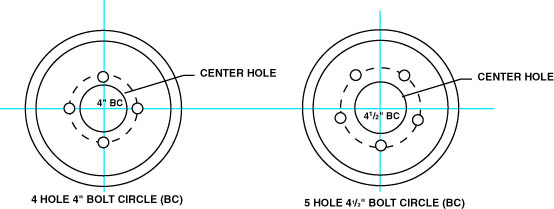
Tire 'load range', or the maximum weight each tire can safely support, must be considered when selecting the proper size tire for your application. The load range and maximum weight capacity are indicated on the tire side wall.
- LOAD RANGE B = OLD 4 PLY RATING
- LOAD RANGE C = OLD 6 PLY RATING
- LOAD RANGE D = OLD 8 PLY RATING
SPECIAL TRAILER 'ST' TIRES?
TrailerTires.com carries a full line of nylon bias ply boat trailer tires and utility trailer tire. These 'Special Trailer' (ST) tires have been constructed for better high speed durability and bruise resistance under heavy loads. Trailer tire construction varies substantially from automotive tires, therefore it is essential to choose the correct tire for your towing application. In general, trailer tires have the same load range (or ply) from bead to bead and are bias ply construction. This allows for a stiffer side wall which provides safer towing by helping to reduce trailer sway problems. The use of 'Passenger Car' (P) tires a on a trailer is not recommended because their construction, usually radial or bias belted, allows for more flexible side walls. This could lead to increased trailer sway and loss of control.
Tire 'inflation pressure' is also an important factor in proper handling as well as tire life. Maximum inflation pressure is indicated on the tire side wall and should always be checked when the tire is cold before operation.
Finally, an important safety procedure is to apply and maintain proper 'lug torque' on trailer rims. Too little torque may cause the wheel to wobble or fall off. Wheel nuts/bolts should be torqued after each wheel removal, retorque after 50 miles and frequently thereafter. Follow the manufacturers recommended torque patterN:
U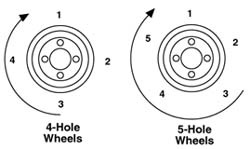 se 60 degree cone angle zinc plated nuts or lug bolts initially tighten to 12-20 ft. lbs. using a cross tightening sequence (1,3,2,4 or 1,3,2,5,4). Finish torquing to 70-80 ft. lbs. (NOTE: Nuts and studs should be clean, dry and not lubricated.) Retorque after 50 miles of travel and frequently thereafter.
se 60 degree cone angle zinc plated nuts or lug bolts initially tighten to 12-20 ft. lbs. using a cross tightening sequence (1,3,2,4 or 1,3,2,5,4). Finish torquing to 70-80 ft. lbs. (NOTE: Nuts and studs should be clean, dry and not lubricated.) Retorque after 50 miles of travel and frequently thereafter.





